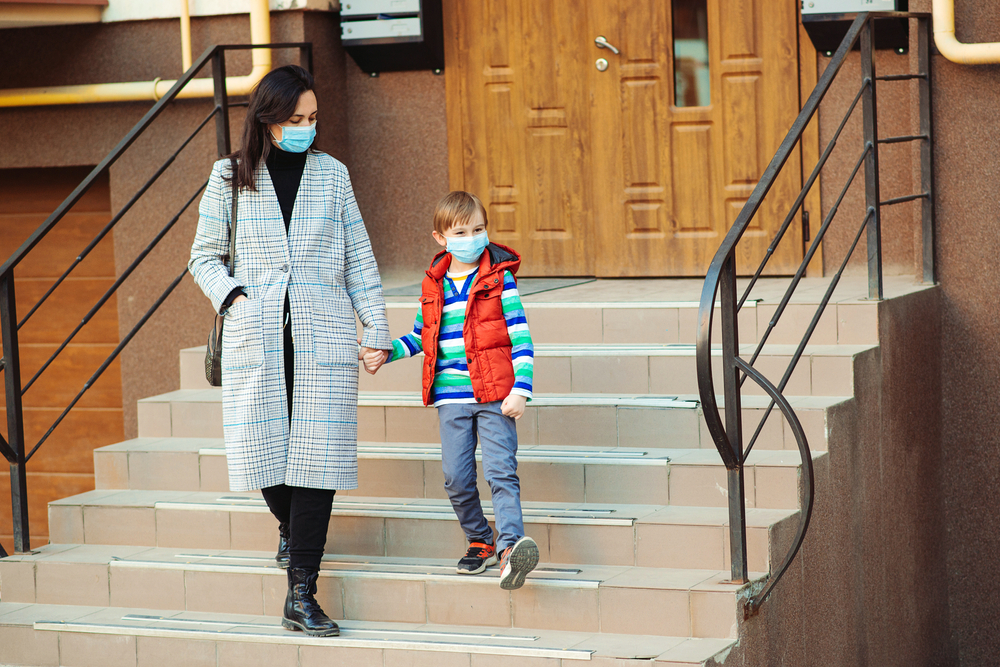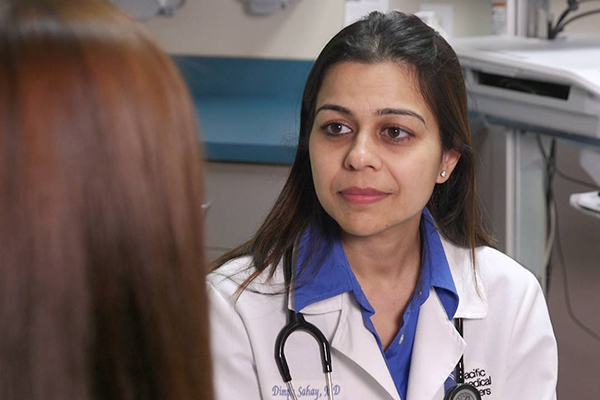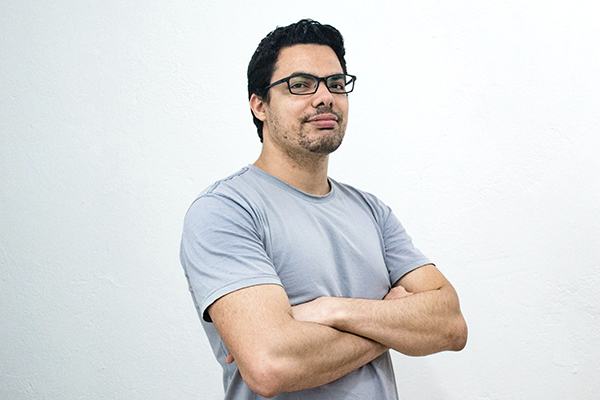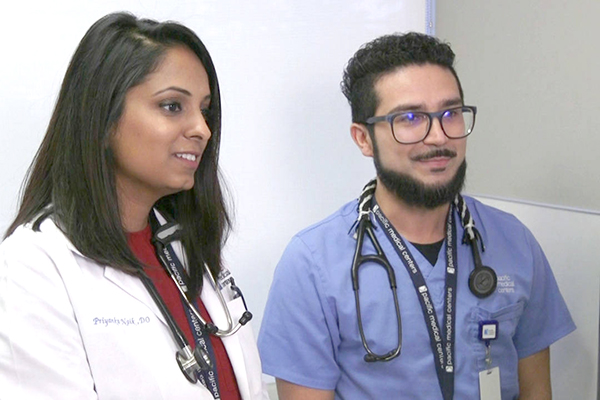Venturing out from COVID-19 Isolation

Once you’re fully vaccinated, you’ll be able to explore life just like before, right? Not so fast. Even after vaccination, some precautions are still needed—and fear, anxiety and other feelings from the pandemic will not disappear overnight.
I believe it’s important for everyone to make the transition at their own pace. It’s totally normal to experience mixed feelings as you transition back to more public engagement. Long-term changes like isolating more and increased vigilance can have lasting psychological impacts. Or perhaps you experienced a personal loss, change in employment or long-term health effects. Take it slow.
You may need a nudge to get the social contact that can benefit mental health. Think of habits you can take baby steps to shift outside the house—visiting a coffee shop during off hours, taking a walk on your breaks, maybe seeing a movie matinee in the theater.
Next, consider an indoor visit with one person outside your “bubble” or a brief gathering with a small group of friends. Give yourself time to get comfortable with that change, then extend it again. It’s natural to feel anxiety at first, but you may find relief as you take these steps safely.
As venues start reopening, venture to places you enjoyed before the pandemic. Acknowledge any feelings of fear and uncertainty you have, and don’t push yourself to do something you’re not ready to do just because others are. Likewise, when exploring with others it’s important not to invalidate their feelings if they’re not ready for things you’re comfortable with.
Of course, continue to wear face coverings and practice social distancing as needed. The medical field is still learning about the degree of protection the vaccine provides, so now is not the time to let your guard down. Evidence for the vaccines’ effectiveness and safety is very positive, however the rare Johnson & Johnson complications show us we are still learning. Learn more from www.CDC.gov, or your doctor.
Anxiety can affect anyone. If you are feeling extremely anxious or have panic attack symptoms such as hyperventilating, heart palpitations, blurry vision or feeling as if you may pass out, talk to your provider. Remember to venture out slowly—so you can gradually enjoy life more and more over time.
Key ingredients for women’s wellness
 Daily habits can improve mental and physical health. Just as important? Asking for help.
Daily habits can improve mental and physical health. Just as important? Asking for help.
“Water, simple healthy food, oxygen and sunlight (don’t forget sunscreen) are essentially all that we need,” says Dr. Dimple Sahay, a family medicine physician at Pacific Medical Centers (PacMed) Renton.
Of course, sometimes our health gets more complicated than that. Which is why Dr. Sahay’s next piece of advice is so important: “Reach out and seek help when you need it.”
Daily habits for better women’s health
- Balanced diet
- Daily exercise
- Quality sleep
- Avoid smoking and limit alcohol intake
- Practice safe sex
- Manage stress with relaxation techniques like deep breathing, meditation or yoga
- Regular doctor’s visits to screen for common health issues
“Some of the most common health issues among female patients are cancer (particularly breast and cervical cancer), cardiovascular diseases, autoimmune diseases, maternal and reproductive issues, osteoporosis and other bone and joint diseases,” Dr. Sahay says. “Strong collaboration between doctors, patients and their families can help with disease awareness and promote good health practices.”
Dr. Sahay believes preventive medicine is a stepping-stone to achieving a healthy lifestyle and focuses on building trust with her patients to provide the best care.
Mental health and the pandemic
“It’s natural to feel stressed, anxious, depressed and emotional with the loss of loved ones and social isolation,” Dr. Sahay says. “The best advice I can give is to be proactive and seek support to boost your mental health.”
Some suggestions:
- Participate in outdoor activities you enjoy and find ways to exercise every day
- Stay busy with indoor activities and stay connected to loved ones
- Develop new interests or hobbies to engage your mind in new ways
- Stay positive and patient, and try not to let stress get in the way of your goals
- Maintain your physical health with good nutrition, sleep and exercise
Dr. Sahay is fluent in English, Urdu and Hindi, and is accepting new patients at PacMed Renton, 601 S. Carr Rd., Suite 100.
“I like seeing patients of all ages. I enjoy taking care of newborns and watching them grow up, and I love taking care of my elderly patients and listening to the fun stories and life experiences that they share with me,” she says.
One secret to men’s health: Actually visiting the doctor!
 Preventive care, regular screenings & strong doctor-patient relationships are key to long-term health
Preventive care, regular screenings & strong doctor-patient relationships are key to long-term health
Dr. Jimmie C. Stewart is seeing an encouraging trend in his Family Medicine practice at Pacific Medical Centers (PacMed) Canyon Park: men returning to the clinic to catch up on annual physicals and routine health screenings.
“Now that the threat from COVID-19 is hopefully starting to wane, I’m beginning to see more patients refocusing on preventive care, which is great. Research shows, if we can be aggressive on preventive care and catch issues early, we can prevent many long-term health issues,” he says.
In general, men are notorious for avoiding doctor’s visits, and Dr. Stewart can sympathize. If you think you’re too young to get sick or don’t understand why your doctor has ordered extra tests in the past, you may be hesitant to go to the primary care clinic, especially if your symptoms are mild. Such hesitancy is common. But Dr. Stewart says annual exams are important, and well worth a visit.
“I get so excited when we can find an issue before it becomes a serious problem. We can correct it easily and early, and my patient gets to keep living the lifestyle they want to be living,” Dr. Stewart says. He explains that common conditions like prediabetes and hypertension can be asymptomatic in the early stages, but if you wait until symptoms are more severe, you may experience more serious, long-term issues. That’s why annual physicals and screening tests are so important.
Men’s preventive health checklist
There’s no universal formula for better health. Your doctor can make personalized recommendations based on your family history, your lifestyle and your goals. But if you’re curious where you stand on preventive care, Dr. Stewart suggests keeping the following milestones in mind:
- Age 35 – 40: Cholesterol screening as part of your annual checkup. “Uncontrolled cholesterol indicates a greater risk of heart disease,” Dr. Stewart says.
- Age 45-50: Colon cancer screening. “Colon cancer is affecting people younger and younger, and modern screening doesn’t have to be invasive. Talk to your doctor about the risks and benefits of these screening options.”
- Age 55+: Prostate screening.
No matter your age or health goals, Dr. Stewart promotes building a strong relationship with your primary care doctor to help keep you on the right track.
“Some patients want to avoid medication or expensive tests, and I understand,” he says. “I try to give my patients as much information as possible, and then let them decide. I think of it as ‘a menu of options.’ My job as a physician is to explain the menu; my patients are always in charge.”
Ask the Experts: The Importance of Physical Therapy to Keep Moving
However, engaging in physical activity to keep our bodies moving is critical. Aysha Morgan, a physical therapist from Pacific Medical Centers (PacMed) in Canyon Park, tells us the importance of implementing physical therapy into your wellness routine. Now is the perfect time to start, as physical therapy appointments can be done in the comfort of your own home through virtual appointments.
How have the pandemic and social distancing mandates taken a toll on our bodies?
The pandemic has impacted us all. We’re all less physically active and are engaging in less physical exercise. These two concepts are separated because less of both will make a big impact in your overall health.
Physical activity is the overall movement of the body and muscles that requires energy. Physical exercise, however, is a planned, structured and repetitive movement to improve your physical fitness.
The pandemic has caused a huge deterioration for who we are—as humans need regular physical activity to function—by limiting options for physical exercise and physical activity, resulting in a more sedentary lifestyle.
Currently, what are the most common injuries or areas of concern you are seeing as a physical therapist?
For my older patients, I was surprised to see an increase in knee, hip and leg issues. As a result of a more sedentary lifestyle, patients aren’t able to go to their regular yoga classes or aren’t gardening as much as they used to. I can tell that people are less physically active because there have been more issues related to falls and balance as well.
For students and folks working from home, I have noticed that those patients have more neck and back strain due to a bad at-home work setup.
What are some recommended exercises we can do from home while gyms have limited openings?
You should not do the same activity every day. If you go on a walk, vary your route with different slopes or steps to help strengthen your joints and muscles.
- Chest and shoulder exercises are best for those who are sitting at a desk most of the time. This is the area that gets tight from stress and working on a computer.
- Corner stretches are also helpful to stretch out these areas.
- Consider doing movements that are opposite of what you do while you’re sitting:
- Stretch your arms behind you often
- Roll your head and shoulders to take a break
- Doing the opposite and stretching is key
I also suggest making an appointment with a physical therapist to discuss what movements would be best for strengthening areas of concern with your body.
For those working from home full-time, what advice do you have to ensure our bodies stay healthy?
If you work from home, consider how long your commute in the morning and evening is, and use that time to go for a walk or do a quick workout. It’s important that you establish a routine and don’t go straight to work after waking up.
Other things to consider are:
- Make sure your elbows and wrists are supported while you’re working at your desk.
- The “next position” is something to keep in mind – sit for an hour and a half, stand and repeat.
- Consider replacing your chair with an exercise ball, if possible.
Three Ways to make the most out of a primary care visit
 Communication is key… so it certainly helps that this doctor is fluent in four languages!
Communication is key… so it certainly helps that this doctor is fluent in four languages!
When Dr. Priyanka Naik started medical school, she thought she wanted to be an OB-GYN doctor. But during her fourth-year clinical rotations, she realized she didn’t like being so specialized and that another field better aligned with her values: Family Medicine.
“I really enjoyed working with all ages and realms and wasn’t ready to give that up and limit myself to a specific population,” she says.
Dr. Naik now practices at Pacific Medical Centers (PacMed) Northgate, but she first fell in love with medicine in high school when she volunteered in an Urgent Care registration department.
“I got to witness first-hand how the physicians cared for everyone, no matter who walked through the door. It really inspired me to get into medicine,” she says. “As a Family Medicine physician, I’m able to provide care for anyone and everyone, regardless of their age, gender or condition.”
Making the most out of a doctor’s visit
Visiting with your primary care doctor can be stressful, and too often patients leave the doctor’s office confused or unsatisfied. Dr. Naik has some advice to make sure doctors and patients achieve comprehensive care:
- Take time to find a good fit: “I encourage patients to do their research and find a physician who provides care that aligns with their beliefs and goals,” says Dr. Naik. She learned a lot about doctor-patient relationships from one of her Family Medicine residency mentors. “He taught me to be culturally sensitive when caring for my patients and incorporate their social and cultural beliefs as I care for them.” Dr. Naik was born in India and moved to the United States when she was 13, so she’s familiar with a variety of cultures. She is fluent in English, Hindi, Urdu and Punjabi. “I definitely have some patients who find comfort in knowing their concerns are addressed directly, without losing anything in translation.”
- Make a list: “I make a list, especially when I’m working with patients who have a chronic illness, and I encourage my patients to do it too,” Dr. Naik says. At the start of each visit, whe and her patient go over both lists and decide which concerns to address first.
- Ask questions: “Questions empower patients to be part of the decision-making process,” she says. Think of primary care as a partnership, with both doctor and patient involved in finding solutions.
“Medicine is a very gratifying field. I enjoy challenges and problem-solving, and with each patient I learn something new about a medical condition and about myself,” Dr. Naik says. “By listening to my patients and learning about their lives, I build strong patient-physician relationships and provide higher quality care.”







 With continuous pandemic challenges thrown our way, our overall mental and physical health has taken a toll. From adapting daily routines to reinventing socially distant hobbies, we have been fairly homebound as we strive to keep our communities safe.
With continuous pandemic challenges thrown our way, our overall mental and physical health has taken a toll. From adapting daily routines to reinventing socially distant hobbies, we have been fairly homebound as we strive to keep our communities safe.